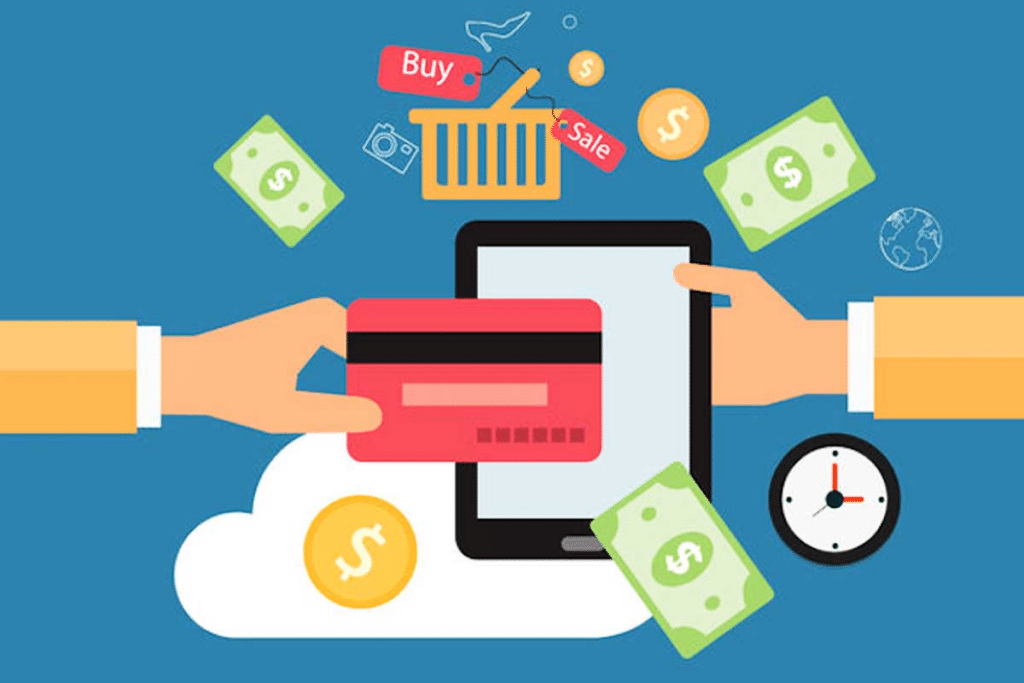Dropshipping is a business model in which a retailer does not keep goods in stock, but instead transfers customer orders and shipment details to either the manufacturer, another retailer, or a wholesaler, who then ships the goods directly to the customer.

In 2023, dropshipping is typically done through an e-commerce platform, where retailers can find and purchase products from a variety of manufacturers and wholesalers to sell on their own website or marketplaces like Amazon or Etsy.
The process of dropshipping works like this :
- A customer places an order on a retailer’s website or marketplaces
- The retailer forwards the order and customer details to the supplier
- The supplier ships the goods directly to the customer
- The retailer keeps the difference between the wholesale price and the retail price as their profit
This model has become popular because it allows retailers to sell a wide range of products without having to maintain physical inventory, and also allows for more scalability than traditional brick-and-mortar retail businesses.
👉🏼 Additional reading : 18 Best Email Marketing Software for Affiliate Marketing in 2023
Contents
What is a Dropshipping Business Model ?
A dropshipping business model is a retail fulfillment method where a store doesn’t keep the products it sells in stock. Instead, when a store sells a product, it purchases the item from a third party and has it shipped directly to the customer. As a result, the merchant never sees or handles the product.
This business model is often used by entrepreneurs, small business owners and even some large e-commerce retailers who want to start an online store, but don’t want to deal with the operational and financial challenges that come with managing a warehouse, shipping products, and handling returns.
Dropshipping allows the seller to offer a wide range of products without having to maintain inventory or deal with logistics, and this is the main reason for its popularity. Additionally, the startup cost for dropshipping is relatively low, as the seller does not need to invest in inventory upfront and therefore able to test the market with minimal risk.
It’s worth noting, however, that in dropshipping, margins can be lower due to the added cost of a third party supplier and the need to factor in shipping costs, which eat into the profit.
How Does Dropshipping Business Work ?
The exact logistics of dropshipping depend on your arrangement, but typically the dropshipping process follows this general sequence:
- Seller signs agreement with dropshipper.
- Customer orders online.
- Seller receives order.
- Customer receives an order confirmation.
- Seller forwards the order to dropshipper.
- Dropshipper ships the order.
- Customer receives their product.
👉🏼 Additional reading : Looking for Tool to start a Dropshipping business ? I suggest checking out ▷ Shopify
Here is a step-by-step explanation of how the Dropshipping process works :
- Choose a niche and select products : The first step in starting a dropshipping business is to research and select a niche and products to sell. You’ll want to choose a niche that you’re passionate about and that has a proven demand. Once you have a niche and products in mind, you’ll need to find a supplier or wholesaler to purchase the products from.
- Find and partner with a supplier : Finding the right supplier is an important step in setting up a successful dropshipping business. You can find suppliers on platforms such as AliExpress, SaleHoo, or Doba. You can also find suppliers by attending trade shows, searching online directories, or using a service like Alibaba to contact manufacturers directly.
- Build an e-commerce platform: Next, you’ll need to set up an e-commerce platform to sell your products on. This can be done by building your own website using platforms such as Shopify, WooCommerce or by using marketplaces such as Amazon or Etsy.
- Market your products : Once your e-commerce platform is set up and your products are listed, it’s time to start marketing your store and driving traffic to your website. You can use a variety of methods to market your store, such as social media, search engine optimization, pay-per-click advertising, and influencer marketing.
- Process and fulfill orders : Once you start getting orders, it’s time to process and fulfill them. You’ll need to log in to your supplier’s website, place the order and provide them with the customer’s shipping information. Your supplier will then ship the product directly to the customer.
- Handle returns and customer service : As a dropshipper, you’ll also be responsible for handling customer service and any returns. You’ll need to have a clear returns policy in place and be prepared to handle any customer service issues that arise.
It’s worth noting that, as the supplier is responsible for shipping and handling returns, it’s important to have a good communication with them, and keep an eye on the delivery times, in order to give the best service and keep a good reputation.
Pros and Cons of Dropshipping :
Pros :
- Low startup costs: One of the biggest benefits of dropshipping is that it requires a relatively low financial investment to get started. You don’t need to purchase a large inventory upfront, which means you can start your business with less capital.
- Wide product selection: Another benefit is that you can offer a wide range of products to your customers without having to hold inventory. This allows you to test different products and find out what sells best without having to invest in a lot of stock.
- Flexibility: As a dropshipper, you can run your business from anywhere, as long as you have an internet connection. Additionally, you have the flexibility to change your product offerings and supplier as per your needs.
- Scalability: Dropshipping allows you to scale your business up or down depending on demand, which is important if you want to grow your business over time.
Cons :
- Low margins: Due to the added cost of a third party supplier and the need to factor in shipping costs, dropshipping businesses often have lower profit margins.
- Lack of control over the product and the shipping: Because you do not handle the product or shipping process yourself, you have less control over the quality of the product and the speed of shipping. This could lead to customer dissatisfaction and negative reviews.
- Dependence on suppliers: If your supplier goes out of business or raises their prices, it can negatively impact your business. In addition, dropshipping models are prone to price wars, which can also affect your business.
- Limited branding: Since you are not the manufacturer of the product, it can be difficult to build a strong brand around the products you’re selling, which can limit your ability to charge premium prices.
Overall, Dropshipping is a good business model for those who want to start an e-commerce store with minimal investment and without having to deal with logistics and inventory management, but it’s important to keep in mind that the margins are usually lower, and there are risks such as lack of control over product and shipping, reliance on supplier and limited branding.
Best website Platforms for Dropshipping Business :
There are several popular website platforms for starting a dropshipping business, including:
- Shopify – A popular e-commerce platform with a wide range of features and integrations, making it easy to set up and manage a dropshipping store.
- BigCommerce – Another e-commerce platform that offers a wide range of features and integrations, including support for dropshipping.
- WooCommerce – A free, open-source plugin for the WordPress platform that can be used to set up and manage a dropshipping store.
- Magento – A powerful e-commerce platform that offers a wide range of features and integrations, including support for dropshipping.
- OpenCart – A free, open-source e-commerce platform that can be used to set up and manage a dropshipping store.
Ultimately, the best platform for your dropshipping business will depend on your specific needs, budget, and technical expertise. It’s recommended to try out the platforms with a free trial and compare the features, pricing, and user experience before making a decision.
Conclusion :
there are several popular website platforms that can be used to start a dropshipping business, including Shopify, BigCommerce, WooCommerce, Magento, and OpenCart. Each of these platforms offers its own unique features, pricing, and user experience. It’s recommended to try out each of these platforms with a free trial and compare the features and pricing before making a decision. Ultimately, the best platform for your dropshipping business will depend on your specific needs, budget, and technical expertise.
More Resources :
- 8 Job Search Sites and Job Boards, for Finding a Job in 2024
- How to Develop a ChatGPT Alternative : A Step-by-Step Guide
- 3 Strategies for Utilizing ChatGPT When Connected to the Internet
- What Is the Difference Between W9, W8-BEN, and W8-BEN-E Forms for Online Income Tax Compliance?
- ChatGPT vs Google: The Future of Search and Interaction





